Directional tires have a tread pattern designed to rotate in only one direction. When you look at such tires head on, the lateral voids and channels on the tread all point forward and down. The channels on both sides of the tread will run like two waterfalls joining from opposite sides, like this: ϒ
Directional tires (also called unidirectional) are better for performance cars — and traveling at high speeds — than tires with symmetrical or asymmetrical tread patterns. The tires channel water away efficiently for excellent hydroplaning resistance and deliver sporty performance on dry surfaces.
But directional tires cannot be easily rotated to as many positions on the vehicle. In order to rotate directionals to opposite sides of a vehicle — not just between front and back on the same side — the tires have to be dismounted from the wheels and remounted before being installed.
For this reason, most drivers end up just switching directional tires from front to back on the same side when they get a rotation. This means the tires will wear less evenly and more quickly, and that’s why you may get less mileage.
Most directional tires have a solid center rib, which adds rigidity for high-speed stability. Also, the lateral channels on the tread pattern all point down in a V-shape. Such designs are used on summer or winter tires.
Here’s a comparison between directional, symmetrical and asymmetrical treads.
The most common tread pattern for passenger cars is symmetric. The left and right tread blocks mirror each other, and the grooves and voids point in multiple directions. Both summer and winter tires use this type of pattern.
Asymmetric treads combine the above two patterns to offer good grip on dry, wet or snowy roads, making the tread type a better choice for all-season use. The inner side of asymmetric tires often features lateral voids like those found in directionals, while the outer side uses larger tread blocks.
On directional tires, there’s an arrow on the sidewall of the tires — when correctly mounted, the arrow points toward the front of the vehicle. If directional tires get mounted backward, you won’t get the hydroplaning resistance and other performance driving benefits the tread is designed for.
Front and rear tires often wear at different rates. It is recommended to rotate standard tires between front and back and crossways to maximize lifetime mileage.
When you have directional tires, you can only easily swap fronts for rears on the same side of the car. If you want to cross tires to opposite sides, you’ll have to go through the time and expense of having the tires taken off the wheels, flipped, remounted on the wheels and swapped.
Directional tires provide superior handling in wet conditions or dry. The V-shaped tread allows water to be pushed outward as the tire rotates, evacuating water better than a symmetric tire.
The tires handle better at high speeds. Most race and sports cars run with directional tires.
Directionals can also provide better fuel efficiency since they have less rolling resistance. (But if you’re a spirited driver, faster accelerations and speeds may offset these gains.)
The main downside is cost. The rubber compounds used in these high-performance tires mean a premium price point compared to standard passenger car tires.
Also, directionals typically have shorter tread life. It’s not because the tread is less durable, but rather it’s because tire rotations involve extra labor and cost. Many drivers opt to swap front and rear tires on the same side to avoid the hassle.
SHOP TIRES
Checking your type of tires is important in order for you to know whether you are using the optimal tire for your daily driving or not. Some people settle only by just knowing whether the tire is properly working or not. But you can get other benefits by finding out whether you are using a directional tire or not.
But you can get other benefits by finding out whether you are using a directional tire or not.
Directional tires have different characteristics compared to symmetrical and asymmetrical ones. That being said, they have different things to offer for every vehicle in terms of steering response, handling, and braking.
Knowing the DifferenceIt is a must to know the difference between asymmetrical, symmetrical, and directional tires. Some people find this confusing whenever they try to tell whether the tire is directional or not. To prevent this from happening, we list down all the factors in order for you to prove if your tire is directional or not.
Directional Tires are most commonly used for sports-related driving, off-roads, and rallies. They are also used for the winter season as they have more traction on the snow compared to other types of tires.
Directional Tires Have a Rotation Sign on the SidewallThe directional tires are specifically made to go in one direction only. You can see whether you have directional tires by simply checking the rotation indicator on the sidewall of your tire. You will be able to determine if the tire is mounted correctly if you see the arrow going counterclockwise
You can see whether you have directional tires by simply checking the rotation indicator on the sidewall of your tire. You will be able to determine if the tire is mounted correctly if you see the arrow going counterclockwise
Directional tires have a uniform appearance. By checking the tread pattern of the tire, you can easily determine whether it is a directional tire or not. You will commonly see a V shape or a Y shape at the center of the tread. Unlike the asymmetrical and symmetrical ones that usually have a diagonal pattern.
The purpose of having this V and Y shape have a way to evacuate water much faster during the run. This way vehicles with directional tires have much more preventive factors from the phenomenon called hydroplaning.
Directional Tires Have a Solid Center RibAside from the sidewall and tread, you can differentiate a directional tire from the other ones because it has a solid center rib. The purpose of this is to maintain a standard contact patch for wet and dry terrains for a better steering response when the direction changes. This improves vehicle handling and braking.
The purpose of this is to maintain a standard contact patch for wet and dry terrains for a better steering response when the direction changes. This improves vehicle handling and braking.
Directional tires are strict in terms of mounting. It is crucial for directional tires to be mounted correctly in terms of the rotation symbol it states. Wrong application of mounting could cause the tires to wear down quicker than they should be, it will significantly affect the durability of the tire and the energy efficiency of the vehicle.
FAQs about Directional TiresAs we have concluded that there are differences between the types of tires, it is best to list down the possible twists and turns when using a directional tire. While it is said that directional tires produce a greater benefit compared to the other ones, we should still consider the upsides and the downsides of using them.
Symmetrical and asymmetrical tires can easily be mounted in different directions. However, this does not apply to directional tires. Directional tires should be mounted in unison to prevent any wearing and tearing of the tire itself. Improper mounting will cause your tire to lower its performance quickly, shortens its durability, and would cause the vehicle to produce unwanted noise when on the go.
Rotating a directional tire to its proper pattern is much simpler than the standard rotation. Be reminded that the tires on the front get moved straight from the back, and the back tires rotate straight to the front. An important thing you need to keep in check is directional tires should stay on the same side of the vehicle, that is to maintain the proper direction.
Can I Combine Directional Tires and Other Types?Since we have established that directional cars have specific and different characteristics in terms of form and tread pattern, it is highly discouraged to combine a directional tire with a non-directional tire. This is dangerous due to the fact that directional tires serve a different purpose from the asymmetrical and symmetrical ones.
This is dangerous due to the fact that directional tires serve a different purpose from the asymmetrical and symmetrical ones.
If in case you are really going for it, it is best that you consult your mechanic and check whether the different types of tires can be optimal to use for your vehicle.
Are Directional Tires More Expensive?Since directional tires are meant to produce a higher level of performance in terms of handling and speed, it is true that directional tires cost more than the other ones. Aside from that, directional tires are commonly used in races, winter, and agricultural reasons. Whereas the symmetric and asymmetric are commonly used for casual road driving.
Is Directional Tire Better Than The Other Ones?While it is proven that directional tires have been used for performance-based driving, it is still hard to conclude whether one is better or worse than the other. Keep in mind that safe driving is the top priority, regardless of whether the vehicle is using directional, asymmetrical, or symmetrical tires.
This is the time where you’ll apply the sealant to your tire. Attach the hose to the valve, remove the safety pin and press the yellow button to start putting air and sealant to the tire. Keep in mind that you will use the whole sealant can on your tire. Make sure that you apply the whole sealant to your tire to prevent any malfunctions. We will give you a quick guide on which size to use for every type of vehicle.
It’s easy to know if the procedure was done correctly. The tire rim should start to lift off the ground during the process. If you see that the white liquid stops flowing to the hose, that simply means that you’ve used up all the sealant from the can.
Step 5: Drive Your Car AfterwardsYou do not want your sealant to sit on the bottom part of the tire. It will cause malfunction and imbalance to your car. You want to make sure that the sealant is completely flowing in the tire. To do that, you have to drive your car for about 5 to 10 minutes and check whether there are changes.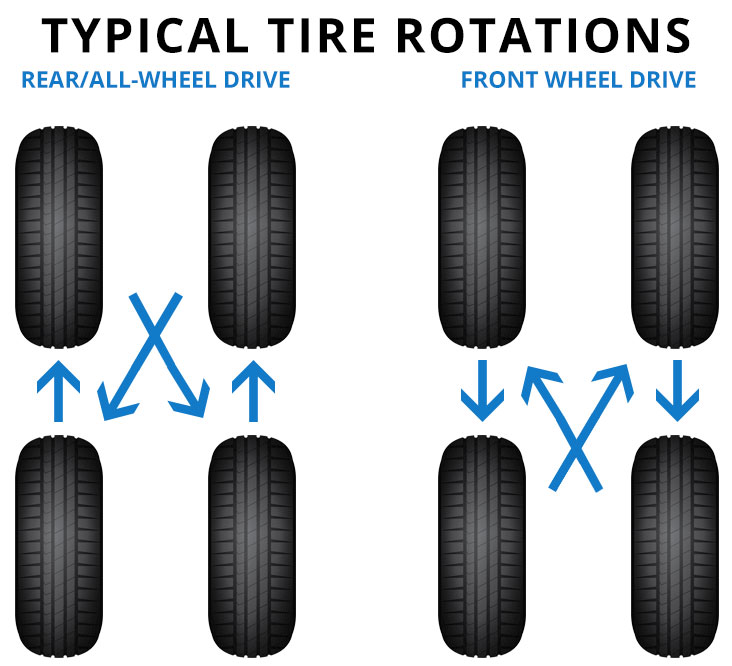 After driving for 5 to 10 minutes, inspect your tire once again and see if there are improvements.
After driving for 5 to 10 minutes, inspect your tire once again and see if there are improvements.
For some cars, TPMS (Tire Pressure Monitoring System) is a way to determine whether your sealant was effective. You can easily see the TPMS on your car dashboard. If the light turns on, it means that the procedure was able to fix the problem.
Step 6: Seek Help From ProfessionalsAs soon as you were able to fix your tires using Fix-a-Flat, it is highly recommended that you seek help from tire experts to check the condition of your tires. You would want to make sure that the tire is properly checked and fixed. That being said, Fix-a-Flat is a very effective tool to fix your tires for an emergency. But you need to make sure to cross out every possible factor as to why your tire had a slow leak. Consulting from experts and securing spare tires, and another Fix-a-Flat can is most helpful.
You only have to resort to aerosol sealants when there is an emergency at hand. Depending on this, every time you have tire trouble will result in unexpected tire replacement and could cost you more money.
Depending on this, every time you have tire trouble will result in unexpected tire replacement and could cost you more money.
It is very well proven that having a gauge can serve as a huge help whenever you have tire problems. By measuring the PSI of your tire, you would be able to determine whether the aerosol worked or not. Keep in mind that the standard pressure of the tire should be around 30 to 35 PSI. If the PSI still falls behind the recommended range, it is most likely that the slow leak issue has not been solved yet.
ConclusionUsing directional tires will indeed bring a more efficient performance in terms of driving. However, we are yet to conclude that directional tires are the best ones we have at least for now. The important thing is that we should keep in mind that knowing the difference between the types of tires is crucial for us to be able to use the most optimal option.
Now that you know the things to consider in order to verify whether you are using a directional tire or not, you now have to make sure that the lists above are thoroughly checked out.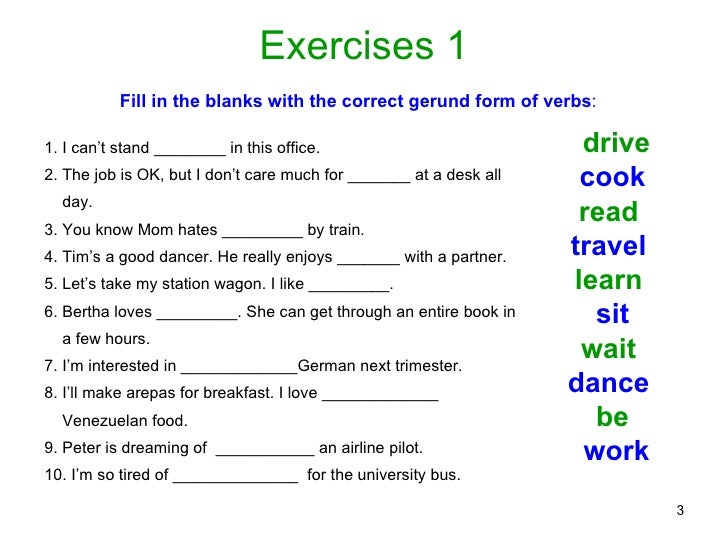 This will ensure that your vehicle is at the top performance when you are on the go.
This will ensure that your vehicle is at the top performance when you are on the go.
Introduction
What is the feature of the directional tread pattern?
Advantages and disadvantages of
directional tiresHow to properly install directional tires
Conclusion
When choosing good tires, you often face the problem of not only a huge number of models, but also a variety of tread patterns, which also need to be sorted out. One of the most popular patterns is the traditional directional pattern, which has been used on the tread surface of a wide variety of tires for decades. nine0006
What are directional tires and why are they still in demand not only among motorists, but also among professional motorcycle racers? In the article, we will reveal all the secrets and technologies of directional tires, as well as show you how to install them correctly. Here, nuances and discoveries await us at every step.
Here, nuances and discoveries await us at every step.
There are four types of car tire tread pattern:
directional symmetrical,
non-directional symmetrical,
non-directional asymmetrical,
directional asymmetric.
Each drawing is designed for its own version of the road and has its own set of advantages. Different tread patterns have different functionality and behavior on the road. When mounting tires on wheels, their own installation principles also work, which will need to be strictly observed so as not to create an emergency. We will talk about them in the corresponding section. nine0006
The essence of the directional tread design is clear at a glance: the blocks, ribs and tread grooves of the V-pattern are directional, spinning the wheel in a certain direction. Most often, directional tires are found in winter models, but there are many of them among summer ones. In symmetrical tires, both halves of the directional tread are mirrored, in an asymmetric design, both halves have a different structure and different functionality.
In symmetrical tires, both halves of the directional tread are mirrored, in an asymmetric design, both halves have a different structure and different functionality.
It is necessary to mount the wheels only in the right direction, otherwise all the advantages will come to naught, and at the same time problems with handling and accelerated wear will be added. Excessive strong pressure will accumulate in the center of the working area, due to which the tire will begin to rise above the road and harm traction in how many areas. nine0006
The directional tread pattern is best suited for wet tarmac, as the grooves that widen from the center to the sides are much better at shedding water from the contact surface. This not only improves grip on wet surfaces, but also works in favor of protection against the effect of hydroplaning. This works even better for a rear-wheel drive car - the front wheels will quickly clear the water before the rear axle sets foot on the road. Accordingly, contact with the track in such a car will be much more thorough. nine0006
Accordingly, contact with the track in such a car will be much more thorough. nine0006
The directional pattern of the winter models excels in raking snow and removing dirt from the contact surface - ideal for snowy trails in the winter.
On a dry summer surface, they also give the car a couple of advantages - first of all, it concerns directional and lateral stability. For high-speed tires, this is one of the most relevant designs, as directional tires have a positive effect on the reactions of the car at high speed. nine0006
However, their driving disadvantage is the increased noise level during active work on asphalt, and the higher the speed, the stronger the rumble. Also, directional tires are more expensive than non-directional tires, but cheaper than asymmetric ones. It is better not to install directional tires if you often drive on dirt roads or are completely forced to drive off-road. They will not show effective work on soft and medium hard surfaces. For rural areas, a tread pattern with a non-directional arrangement of large lugs is better suited. Remember that, being put on disks, wheels with directional rubber can only be changed from the front axle to the rear and vice versa, but not rearranged on the sides. To do this, the tires will have to be disassembled and put as needed. nine0006
Remember that, being put on disks, wheels with directional rubber can only be changed from the front axle to the rear and vice versa, but not rearranged on the sides. To do this, the tires will have to be disassembled and put as needed. nine0006
Although we've talked about directional tires, it's the symmetrical design that's most common. Asymmetric directional pattern is very rare. This is due to the fact that such tires are not only much more difficult and expensive to manufacture, but they have one serious drawback for car owners. Due to the very strict installation scheme for the car, constant difficulties arose with spares - I had to constantly carry two spare wheels with me instead of one, because you never know which tire will be damaged, and you can’t change directional asymmetric tires with sides. In addition, the warehouses constantly accumulated tires for only one side, which are completely useless without a paired wheel. nine0006
As mentioned above, one of the "secrets" of directional tires is their installation pattern. Simply put, you need to find the inscription Rotation (from the English. "Rotation") with an arrow on the sidewall. It is this marker that is an indicator - in which direction the tire pattern should “look” when installed on a car. If you make a mistake with the direction of rotation and put the rubber against the arrow, then the drainage system will rake in water like a mill, and not discard it, leveling all the advantages of the model, or even exacerbating them. The fact that the tires are installed incorrectly will tell you a sharply increased noise in the cabin. nine0006
Simply put, you need to find the inscription Rotation (from the English. "Rotation") with an arrow on the sidewall. It is this marker that is an indicator - in which direction the tire pattern should “look” when installed on a car. If you make a mistake with the direction of rotation and put the rubber against the arrow, then the drainage system will rake in water like a mill, and not discard it, leveling all the advantages of the model, or even exacerbating them. The fact that the tires are installed incorrectly will tell you a sharply increased noise in the cabin. nine0006
If for some reason you could not find this marker, then you can do it even easier - pay attention to the tire tread pattern itself. The rubber of the directional design is a kind of "herringbone" that is directed forward. Simply mount the tires so that the tread pattern faces the direction of travel of the vehicle.
Rubber with an asymmetric device should only be mounted according to the marking, since each individual side is designed for its own tasks and should never be confused.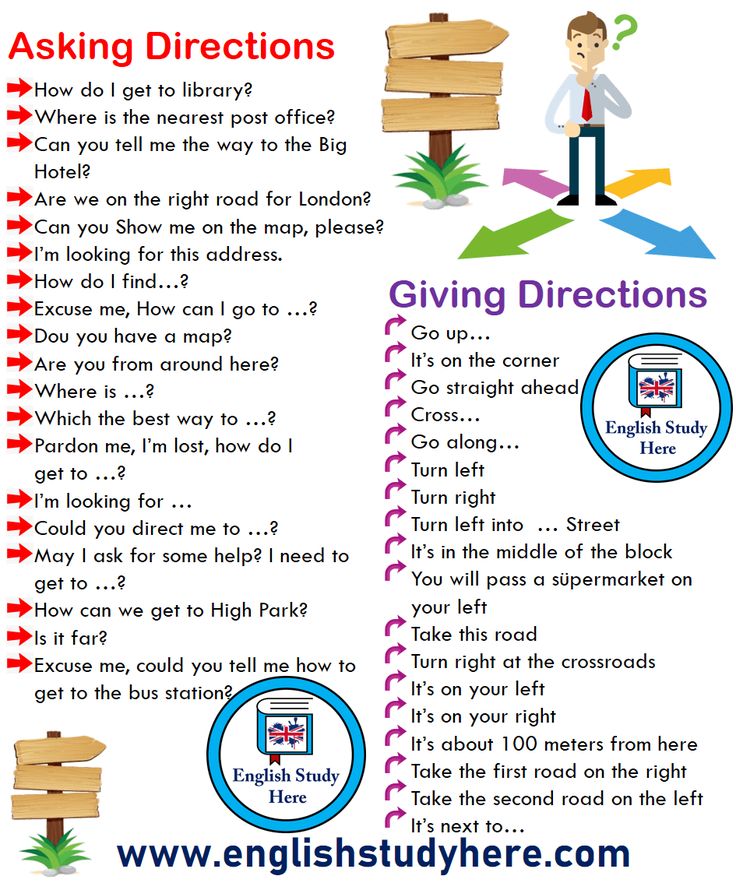 The correct direction of asymmetric tires will help determine the labels:
The correct direction of asymmetric tires will help determine the labels:
Outside, or the outer side of the tire, must face outward.
Inside, or the inner side, respectively, looks inside the car.
Right and left asymmetric tires are much less common. Left (or simply L) will be written on one tire - it means that it must be placed to the left of the body, Right (R) - to the right. You can change them only on one side of the body - front with rear and vice versa. nine0006
But much more often, directional tires can be mounted on a rim on either side, the main thing is to follow the direction of the pattern.
And don't forget to balance freshly assembled wheels - tires will never show their advantages and characteristics without good balance. Only after that you can proceed to the installation on the hubs. After installation, go around the car in a circle and check the markings. Recall that we need the rotation direction under the Rotation arrow. If you have an asymmetric directional tire, then make sure that only the Outside is visible. Left (Left) and right (Right) asymmetric tires must show the sides of the body in the direction of travel. nine0006
If you have an asymmetric directional tire, then make sure that only the Outside is visible. Left (Left) and right (Right) asymmetric tires must show the sides of the body in the direction of travel. nine0006
For a couple more tips on directional tires, watch this video:
Save article:
The article says:
The direction of the tire tread not only determines the quality of grip with the surface. In the absence of markings, this figure allows you to determine which tires are in front of you - winter or summer.
The tread pattern directly affects how your car will behave on wet or slippery roads. However, all the efforts of tire developers will be nullified if they are installed incorrectly.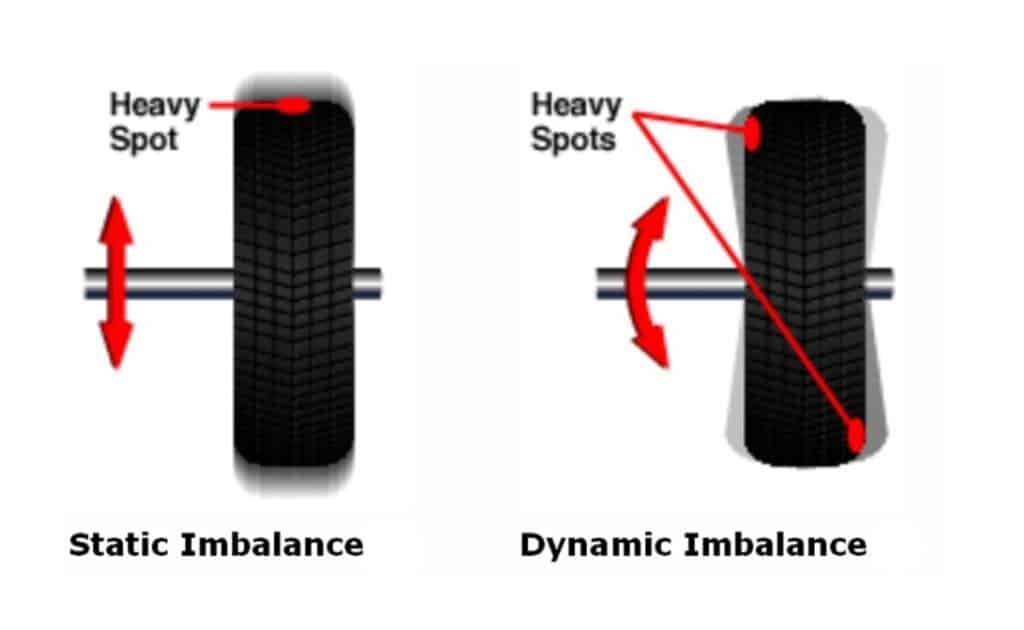 That is why it is so important to observe the correct direction of the tread when changing tires. How to determine it and how to install tires correctly, we will tell in this article. nine0006
That is why it is so important to observe the correct direction of the tread when changing tires. How to determine it and how to install tires correctly, we will tell in this article. nine0006
Tires for cars are divided into several groups depending on the direction of the tread pattern of winter tires:
 In the absence of designations, any location for the bus is selected. nine0007
In the absence of designations, any location for the bus is selected. nine0007 How to determine the direction of the tire tread if several classifications are combined in one tire? Pretty simple: you need to install the wheels according to the generally accepted markings.
Important: you need to position the wheels in such a way that all the words “Inside” are in the direction of the driver!
Determining the direction of rotation of the wheel is easy. It is only necessary that when the car moves forward, the Herringbone tire pattern first touches the road. If the car has stopped, then the tire pattern should look in the direction that is opposite to the movement. This method is suitable for both summer and winter treads. nine0006
There are tires, for example, from Bridgestone, which can be interchanged. However, this should be done only crosswise. In other words, after a run of 50-60 thousand km, you can change the location of the protectors. Instead of the front left, install the right rear wheel, and replace the front right with the left rear.
Read also
“When to change tires for winter: we understand the nuances of legislation and weather realities”
Read more
If the direction of the tire tread pattern is set, then the wheels can be changed on one side, that is, the rear tires must be changed to the front and vice versa. If there are symmetrical tires, you can arrange them in any order.
Advocates of studded treads and velcro tires cite ample evidence that only these tires are the best available and best suited for harsh winters. On the other hand, there are drivers who only recognize treads with a certain pattern. They will furiously argue in defense of such a choice: maximum maneuverability, no noise while driving, etc. nine0006
However, if you are not a fanatic of a certain type of tread and common sense is your friend, then you need to choose tires that take into account the climate of your area and road surface. Next, you will learn the positive and negative sides of wheels that have a different tread pattern and direction.
Next, you will learn the positive and negative sides of wheels that have a different tread pattern and direction.
Photo: rad-star.ru
This pattern is most popular among drivers, as it has a low cost and suitable characteristics. nine0006
Positive traits:
Negative qualities:

If you are not a racer and your driving sense is in the first place, then the ideal option in this case is symmetrical non-directional treads. nine0006
These tires are easy to recognize because the tread pattern looks like a herringbone.
Positive traits:
Negative qualities:
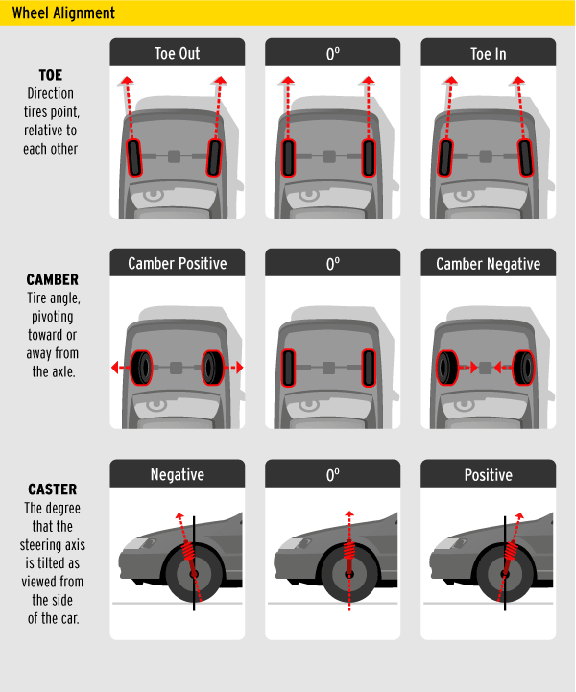 To do this, each sidewall has an arrow, next to which there is also the inscription "Rotation". The arrow shows in which direction the wheel should rotate. If you install the tire correctly, you can use all the positive qualities of tires. However, if installed incorrectly, the trip will become life-threatening, especially on slippery roads! nine0007
To do this, each sidewall has an arrow, next to which there is also the inscription "Rotation". The arrow shows in which direction the wheel should rotate. If you install the tire correctly, you can use all the positive qualities of tires. However, if installed incorrectly, the trip will become life-threatening, especially on slippery roads! nine0007
See also
"What tires can be put on rims 14, 15 and 16: professional advice"
Read more
If you frequently make long trips, prefer high-speed mode and do not have problems with money, then directional tires are just for you.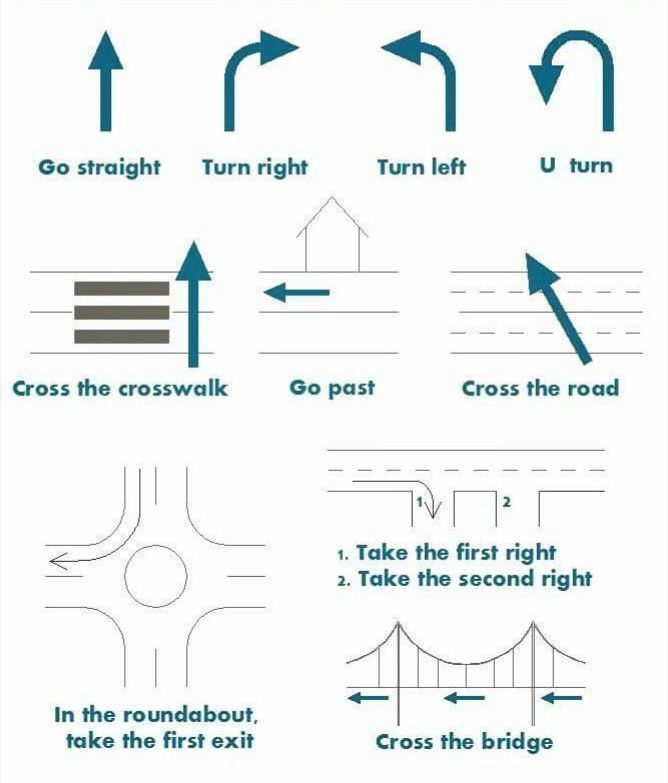 Such tires are also useful where rain is not uncommon and you need to drive on wet road surfaces. nine0006
Such tires are also useful where rain is not uncommon and you need to drive on wet road surfaces. nine0006
Tires with this type of pattern began to appear more and more often in stores. For the most part, such a tread is found on tires of expensive car models.
Positive traits:
Negative qualities:
 This information shows the "inside" and "outside". According to these inscriptions, you need to position the wheels. The side with the word "Inside" should look under the bottom of the car, and with the word "Outside" - out. nine0007
This information shows the "inside" and "outside". According to these inscriptions, you need to position the wheels. The side with the word "Inside" should look under the bottom of the car, and with the word "Outside" - out. nine0007 This type of rubber is quite rare, because it is expensive and difficult to install. In this regard, such tires are produced mainly for supercars and sports cars. nine0006
Positive traits:
Negative qualities:
 Therefore, in the middle of the track, changing the wheel is most likely not possible. Also, this type of rubber pattern is left "L" and right "R" execution. nine0007
Therefore, in the middle of the track, changing the wheel is most likely not possible. Also, this type of rubber pattern is left "L" and right "R" execution. nine0007 In car dealerships, such tires are unlikely to meet you. Basically, they are used for cars that participate in races, or on hypercars. Consequently, the cost of these tires is quite high.
How to determine the direction of the tread on winter tires? Modern car tires are marked with all the necessary data:
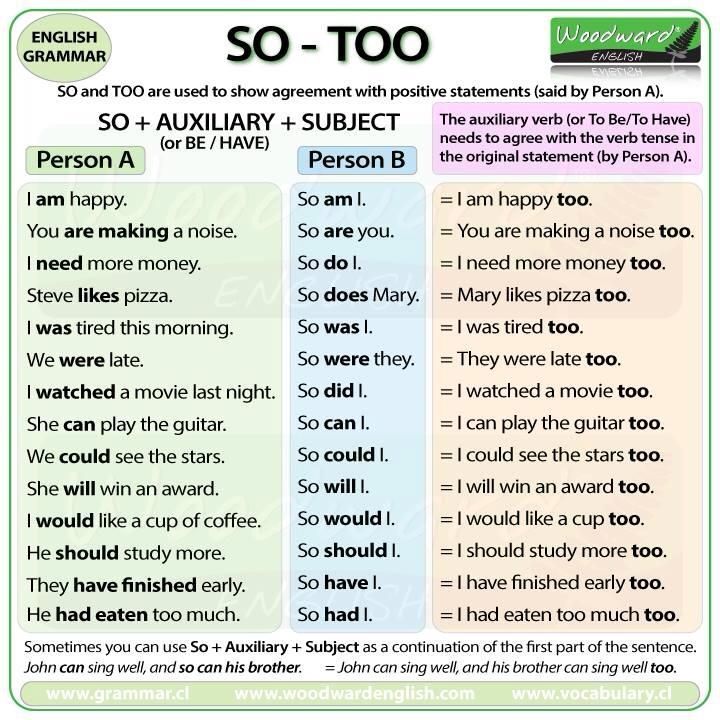 Such inscriptions indicate tires that are not afraid of rain, that is, they give excellent tread contact with wet road surfaces. nine0007
Such inscriptions indicate tires that are not afraid of rain, that is, they give excellent tread contact with wet road surfaces. nine0007 Photo: Shutterstock
When installing new tires on a car or when changing tires seasonally, it is imperative to be attentive to the markings and observe the correct direction of the tread.
Installing Bridgestone asymmetric tires does not require any special skills from you. You just need to remember that "Inside" and "Outside" must be located according to the rules. nine0006
Tires with a directional pattern should be placed in such a way that during movement the wheel rotates in the direction indicated by the arrow. It must be remembered that it shows movement forward.
Since it is not difficult to determine the direction of the tread pattern of non-directional symmetrical tires, they are put in any way you want. There are no installation restrictions.
There are no installation restrictions.
Important: you must install the wheels correctly! Otherwise, even one incorrectly located wheel will interfere with the quality of driving, and the tire itself will wear out quickly. nine0006
Recently, manufacturers have begun to produce symmetrical tires, since it is impossible to determine which one will become unusable. In this regard, the following replacement scheme was adopted:
It should be remembered that in no case should anti-corrosion compounds be used on the road. If you process fasteners with them, then you are guaranteed unbalance. Balance accuracy is easy to determine by the absence of tapping. Correct installation is also determined.
In order for the installation to be correct, it is necessary to check the rotational balance on a special device. At the same time, appropriate equipment is also necessary for installing a tire without a tube. You should understand this point - you can not put tires from different manufacturers on the same car. If this happens, then the suspension starts to knock due to non-uniform damping. Remember, you don't need to save on elasticity and load capacity, otherwise you risk spending more money changing the chassis. nine0006
Popular articles
How to choose a subwoofer for your car
19.12.2022
217
From top to bottom, obliquely: how to degrease a car body before painting
12/15/2022
158 nine0006
Chic, shine, beauty: how to remove scratches on a car with your own hands
9.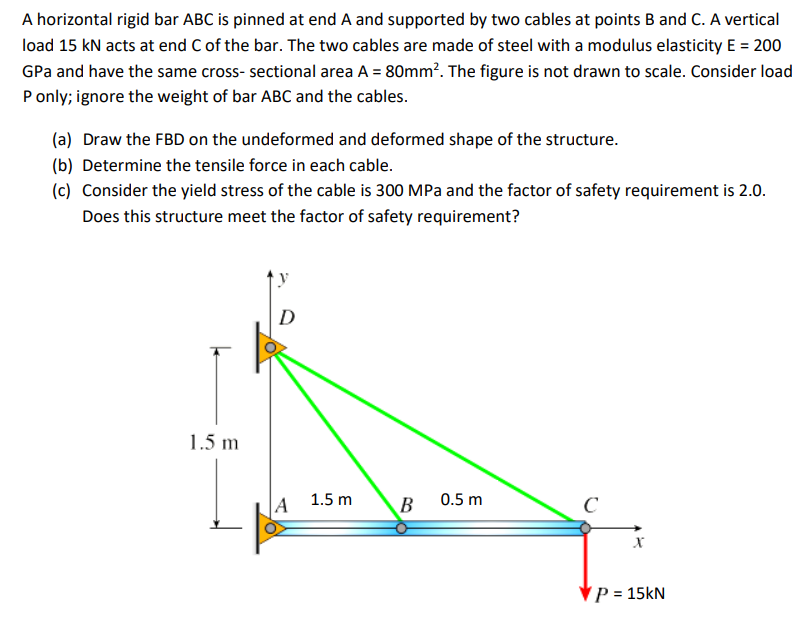 12.2022
12.2022
215
Without damage: how to reduce fuel consumption on a car
11/29/2022
237
nine0106 How much do they pay for advertising on a car11/25/2022
641
We advise you to change tires one at a time, so as not to get confused in them. The new tire should immediately be installed in place of the old rubber. During installation, strictly follow all the instructions and follow the direction of the tread of winter tires. A thoughtful and correct arrangement of tires will allow you to evaluate all the driving properties of the car, and there will be no need to purchase new tires every month. nine0006
nine0006
Important: The minimum tread depth on winter tires has been increased to 4mm. Get your winter tires inspected so that there are no problems with the Highway Patrol.
If there is a puncture of the front tire, then if there is a “stowaway”, you can install it instead of the rear wheel, and install it in place of the punctured front rubber.
Why such freezes?
It's simple: at the moment of braking, it is the front wheels that give up to 80% of the effective stop. nine0006
In this situation, you need to drive carefully so that you can easily get to the tire shop. Here acceleration does not play any role, only braking efficiency is important. Especially if you need to brake quickly on slippery road surfaces.
See also
"How to choose winter tires and not miscalculate"
Read more
Without a doubt, the wheels in front help to steer the vehicle, which is why the perfect grip of the front tires is so important. nine0006
nine0006
The most effective removal of various kinds of moisture from a tire with a directional pattern from the contact patch. As a result, the risk of aquaplaning is reduced and the vehicle responds faster to steering movements.
Photo: Shutterstock
However, with the wrong arrangement of tires, the situation becomes exactly the opposite. On wet roads, the effect of hydroplaning occurs, the contact patch of rubber with the road surface becomes worse. As a result, the car is difficult to control, stability decreases, and the accident rate increases. nine0006
Before buying a new set of tires, you need to decide on which road surface the car will drive most often. Based on these data, you need to select the pattern and direction of the winter tread.
It is important to remember: incorrectly selected tires reduce the controllability of the car, which can lead to an accident. If at some point you are forced to use such a tire, then be very careful and do not exceed the speed limit.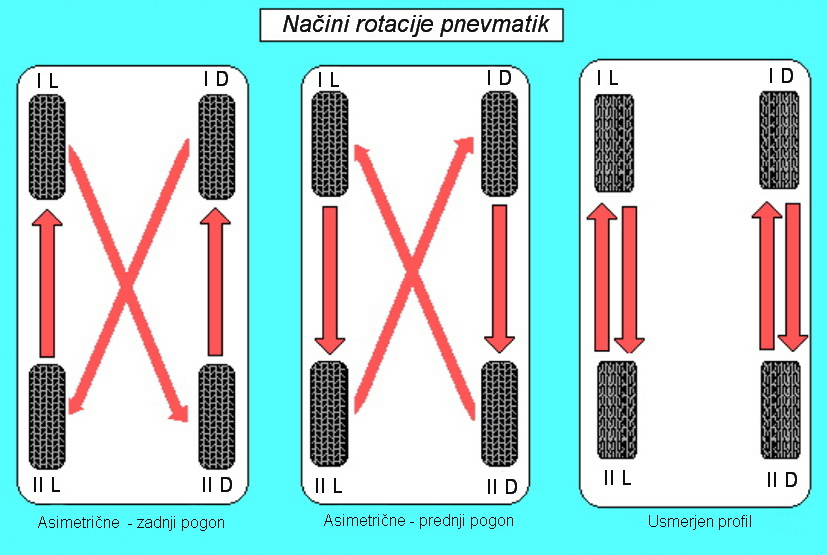 nine0006
nine0006
“Due to inattention, I did not check the correct direction of the winter tire tread. As a result, the “herringbone” on the tire looks the other way. On the Internet they say that now you need to wait for hydroplaning. Is my oversight really that dangerous?
If there is ice on the road, then at a temperature of -20 ° C, water appears between the wheel and the ice. So, these lamellas remove water so that the road is not so slippery. If tires are installed incorrectly, water will not drain. It will begin to squeeze out into the center of the tire, increasing the sliding moment.” nine0006
“When installed, the direction of the tread pattern of winter tires resembles an arrowhead. With its sharp end, it sort of cuts through dirt, snow, water, scattering them away from the wheel.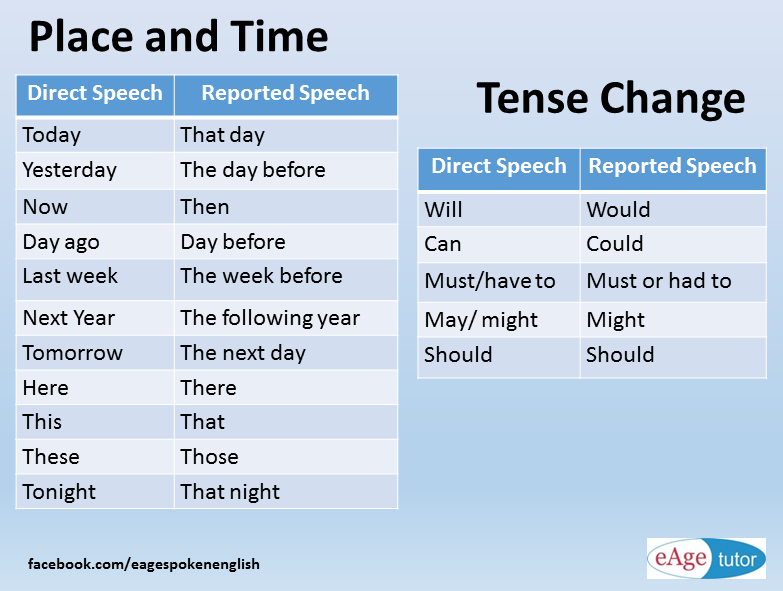 Thus, the contact of the middle of the tire with the road is improved. In this case, the lamellas are cleaned and the tire is repelled much better due to the wedge-shaped bends.
Thus, the contact of the middle of the tire with the road is improved. In this case, the lamellas are cleaned and the tire is repelled much better due to the wedge-shaped bends.
If you set the pattern in the opposite direction, then the entire moisture-containing mixture will be sucked into the center of the contact spot, as it were. Here and hydroplaning is on the way, because this mass sort of lifts the wheel, and traction disappears. nine0006
In order to understand the principle of the tire, you need to imagine the movement of the hands of a swimmer who swims breaststroke. The palms are closed, the arms are pushed forward, then spread apart and the swimmer moves forward. If he starts moving his arms in the opposite direction, he won’t swim far.”
“There are no asymmetric “right” and “left” tires for sale. Only the inner and outer surface is indicated. If the side is inside, then there will be an inscription "INSIDE".